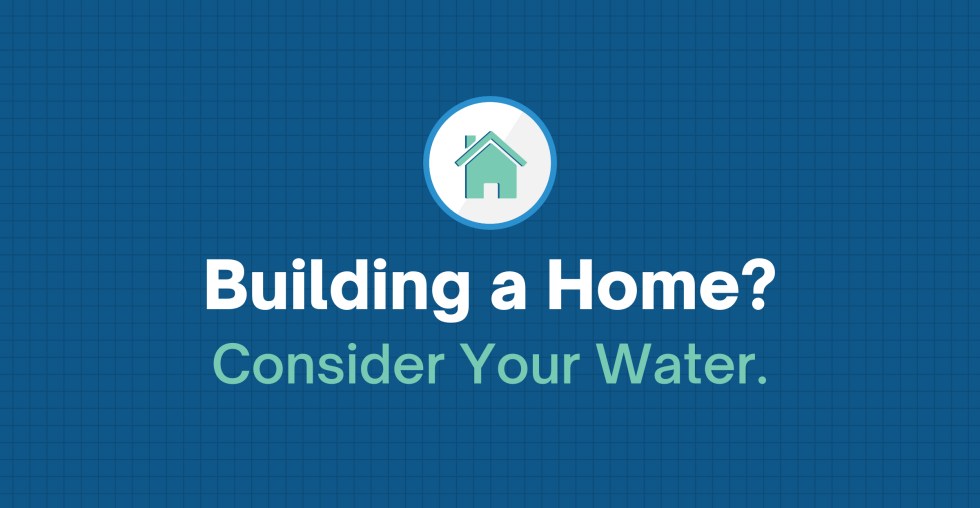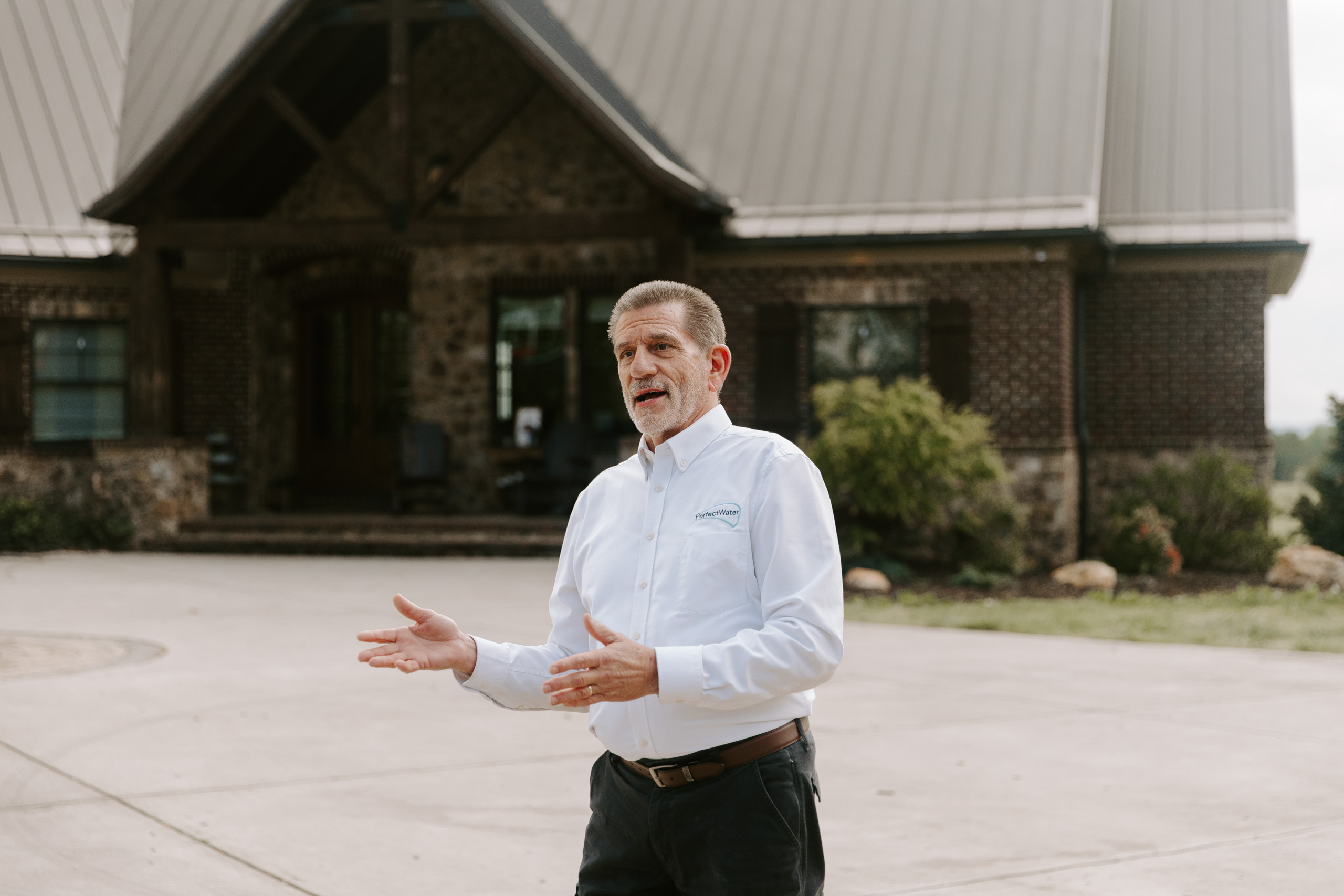Building a Home? Consider Your Water.

Considering Water When Building
When building your home, I’m sure water isn’t very high on the list of things of which you are concerned. But, may I suggest that you look into it a little more so that you are fully informed on what the possibilities are for taking control of your water in your new home – especially if you integrate these options and systems into the build process.
This post is going to cover a variety of topics about the water that interacts with your home. From the water that falls on your rooftop, to the water you drink every day. We look at every aspect of water in your home and ask, “How can we best help the homeowner take control of their water?”
Water of the Home
When thinking about water in the home, one might not initially realize how many aspects of water a homeowner may need to consider.
Water that is in the home, the quality, pressure and flowrate, ability to meet the water demand, and the protection from water leaks throughout the home.
Water that is outside the home, particularly important when building a home, the need to comply with stormwater runoff regulations, as well as the possibility of using rainwater harvesting as the primary water source for the home.
Water Purification (Drinking Water)
Getting high-quality drinking water throughout your home is something a lot of people miss out on when building their homes. Special water lines and fixtures need to be installed for this to work properly.
These highly purified drinking water lines can supply purified water faucets in the kitchen and bathrooms, ice machines, coffee makers, pot fillers, wet bars, and more. This is much more difficult and costly after the build, and sometimes impossible.
Drinking water purification delivers “better than bottled water” purified water right from the tap. It removes impurities such as heavy metals, pesticides, chemicals, disinfecting byproducts, pharmaceuticals, and much more.
Water Softening & Filtration (Whole-House Water)
While drinking water purification is only for water that you consume, water softening and filtration is for all the water in the home.
This applies to both city water and well water.
The idea is to make sure that all the water that enters your home is soft and filtered such that it will maintain the homes plumbing system, water-using appliances, water heaters, and other surfaces that come in contact with the water.
Not only does this water protect your home, but it also helps maintain healthy and natural skin and hair. The contaminants that clog and scale over your home’s water appliances, also wreak havoc on your skin and hair. Once you experience great water, you won’t want it any other way.
Rainwater Harvesting
This moves from water quality alone to a whole house water supply. That’s right! If you are wanting to move off the city water supply, possibly drilling a well, or have poor water quality, availability, or pressure and flow – consider rainwater harvesting.
This complete water source provides homes with the highest water quality available and it acts as your own private water utility.
The collected rainwater is free of chemicals and naturally soft, and it tastes great!
Most homes, especially in the southeast, can easily live off rainwater harvesting as the sole source of water for the home.
Implementing rainwater harvesting during the build process is the best time so that underground piping and electrical can easily be placed, as well as storage location and integration.
Stormwater Management (Site Water Runoff)
Stormwater regulations are becoming more and more prevalent, and homeowners and builders should consider what options are available to meet the regulations.
Using a system rainwater collection system not only helps meet these regulations, but it also provides the benefit of a water source.
Most stormwater management systems are a cost-only product, such as a retention pond, diversion landscaping, permeable pavers, and more. Rainwater harvesting, on the other hand, provides high-quality water for the homeowners to use freely.
Water Availability (Meeting Water Demand)
This comes down to the reliability of your water source. And this isn’t exclusively for well water. We actually have multiple customers who are “on city water”, but the municipal source is always not reliable to have water available, or if it does, it’s at low flow rates or poor quality, etc.
And of course, well water can be unreliable depending on the well.
There are solutions to these problems. Water capacity systems will store large amounts of the provided water on-site to buffer the inconsistency of the water source.
Another option is using a completely new water source such as rainwater harvesting.
Water Pressure & Flowrate
No one likes taking a shower with low water pressure. This is a problem a lot of homes encounter. Their water source, as it is, simply won’t provide the proper pressure and flowrates to meet the demand of the home and its occupants.
Capacity and pressure systems are available to solve this problem. Using water storage, pumps, and controllers, a home can have excellent flow rates and water pressure.
Leak Protection
Finally, thousands of homes are ruined each year by in-home plumbing failures and leaks. A leak protection system will ensure that your home will be protected from such instances.
A good leak detection system should have multiple sensors throughout the home (as many as needed) and the ability to automatically turn off the water main.
Ready to Take Control of Your Water Supply?
Don’t wait for water shortages or unreliable sources to disrupt your life. With our Rainwater Harvesting systems, you can enjoy a sustainable, reliable, and completely self-sufficient water solution tailored to your home’s needs.

